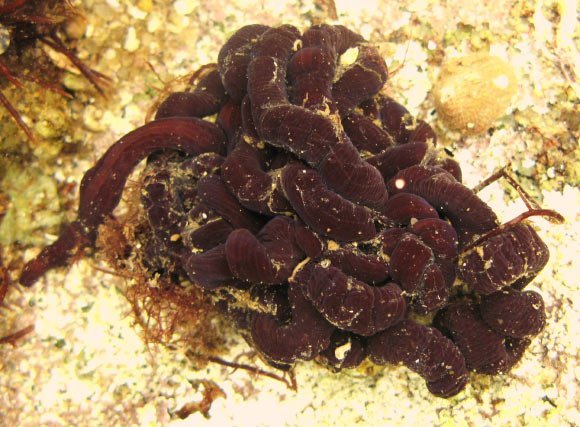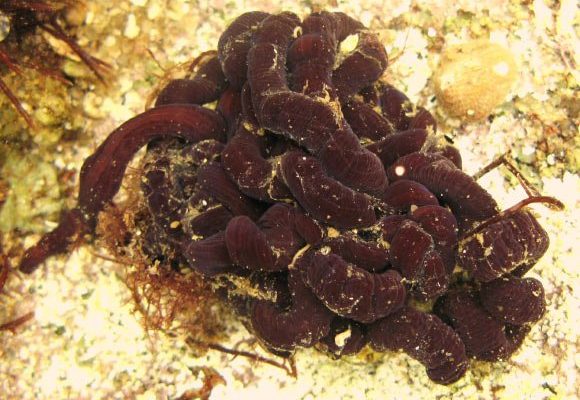
To put it simply, pollution is like a sneaky intruder in the natural world. Just like you wouldn’t want someone to come into your space and mess things up, pollution disrupts ecosystems and the organisms within them, including bootlace worms. In this article, we’ll explore how different types of pollution affect these remarkable worms and what that means for the larger marine environments they inhabit.
What Are Bootlace Worms?
Bootlace worms, scientifically known as *Lineus longissimus*, are a type of ribbon worm found primarily in European waters. These creatures can be quite impressive, sometimes reaching lengths of over 30 meters! That’s longer than a blue whale’s tongue! They are soft-bodied and often go unnoticed, living in the sand or mud of the seabed.
These worms are predators, feeding on small invertebrates and even other worms. Their bodies contain cells that can produce a sticky substance, which helps them capture prey. Despite their gruesome appearance and the fact they can have a venomous bite, bootlace worms play a vital role in their ecosystem, helping to maintain the balance of marine life.
Types of Pollution Impacting Bootlace Worms
When we think about pollution, several types come to mind—chemical, plastic, and noise pollution, to name a few. Here’s how they each affect our slimy friends:
Chemical Pollution
Chemical pollution involves harmful substances entering our waters. This can include everything from agricultural runoff to heavy metals like mercury. For bootlace worms, chemical pollutants can be detrimental. The chemicals can cause bioaccumulation, where toxins build up in the worms’ bodies over time. This not only affects their health but also the larger food web when these worms are consumed by larger predators.
Plastic Pollution
You might have seen pictures of marine life tangled in plastic or mistaking it for food. Bootlace worms, while less likely to get caught in plastic debris, can suffer from microplastics entering their environment. Microplastics can disrupt their feeding habits, as these tiny particles can clog their bodies, making it difficult to absorb nutrients. Plus, consuming microplastics can have unknown long-term effects on their health.
Noise Pollution
It might sound odd, but noise pollution can also affect bootlace worms. Increased noise from ships and industrial activities can disrupt the communication and behaviors of marine life. Although bootlace worms might not “hear” in the traditional sense, vibrations can signal changes in their environment, leading to stress or altered feeding patterns.
How Does Pollution Affect Bootlace Worm Behavior?
Pollution doesn’t just harm bootlace worms physically; it can also impact their behavior. Here’s how:
Stress Responses
When bootlace worms encounter pollution, they can exhibit signs of stress. Increased levels of toxins can alter their typical behaviors, causing them to become less active or change their feeding habits. Think of it like how we might feel overwhelmed in a loud, crowded place. A stressed worm isn’t as effective at hunting for food or reproducing, which can lead to population declines.
Reproductive Implications
Reproduction is crucial for the survival of any species, and bootlace worms are no exception. Pollution can interfere with their reproductive cycles, leading to fewer offspring. Chemical pollutants, in particular, can disrupt hormone levels, leading to developmental issues in young worms. This can have devastating effects on the population over time.
What Can Be Done to Protect Bootlace Worms?
You might be wondering, “What can we do to help?” Luckily, there are steps we can take to safeguard not just bootlace worms, but all marine life.
Reducing Plastic Use
One of the simplest changes we can make is to reduce our plastic consumption. By opting for reusable bags, bottles, and containers, we can help lessen the amount of plastic that ends up in our oceans. Every small action adds up!
Advocating for Cleaner Water
Supporting policies and initiatives aimed at reducing chemical runoff and improving water quality is vital. Engaging with local conservation groups or participating in community clean-up events can also make a difference.
Educating Others
Share what you learn! By spreading awareness about the impact of pollution on bootlace worms and other marine life, you can inspire others to take action. Whether it’s discussing this topic with friends or sharing information on social media, every bit counts.
The Bigger Picture: Why It Matters
You might wonder why protecting bootlace worms specifically matters. They’re just worms, right? Well, bootlace worms are part of a much larger ecosystem. Healthy populations of these worms contribute to the balance of marine life, supporting everything from fish to seabirds. When we protect them, we’re also safeguarding the health of our oceans and the myriad of life forms that call it home.
In summary, bootlace worms are indeed affected by pollution, experiencing everything from physical harm to behavioral changes. As stewards of our planet, it’s essential to recognize our role in their health and well-being. By taking small but impactful steps to reduce pollution, we can help ensure that these fascinating creatures continue to thrive in our oceans. So the next time you see a bootlace worm slithering through the sand, you might feel a bit more connected to its story and the importance of maintaining the health of our marine environments.

